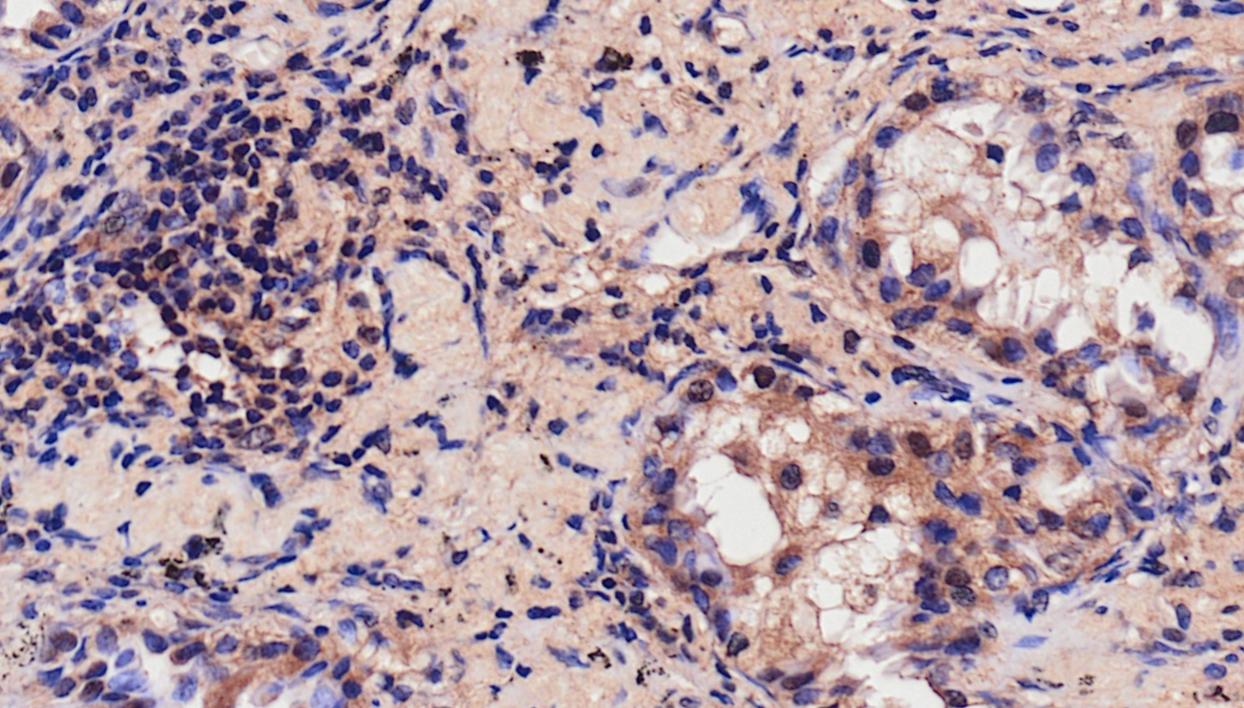Product Detail
Product NameERα (phospho Ser118) Polyclonal Antibody
Host SpeciesRabbit
ClonalityPolyclonal
PurificationThe antibody was affinity-purified from rabbit antiserum by affinity-chromatography using epitope-specific immunogen.
ApplicationsWB,IHC-p,IF(paraffin section),ELISA
Species ReactivityHuman,Mouse
SpecificityPhospho-ERα (S118) Polyclonal Antibody detects endogenous levels of ERα protein only when phosphorylated at S118.
Immunogen DescThe antiserum was produced against synthesized peptide derived from human Estrogen Receptor-alpha around the phosphorylation site of Ser118. AA range:91-140
ConjugateUnconjugated
Other NamesESR1; ESR; NR3A1; Estrogen receptor; ER; ER-alpha; Estradiol receptor; Nuclear receptor subfamily 3 group A member 1
Accession NoSwiss Prot:P03372
GeneID:2099
Uniprot
P03372
Gene ID
2099
Calculated MW66kd
Concentration1 mg/ml
FormulationLiquid in PBS containing 50% glycerol, 0.5% BSA and 0.02% sodium azide.
Storage-20˚C/1
Application Details
Western Blot: 1/500 - 1/2000.
Immunohistochemistry: 1/100 - 1/300.
ELISA: 1/20000. Not yet tested in other applications.
Formalin-fixed, paraffin-embedded Human lung cancer tissue stained for ERα (phospho-Ser118) using 13882 at 1/100 dilution in immunohistochemical analysis.
Formalin-fixed, paraffin-embedded Human breast carcinoma tissue stained for ERα (phospho-Ser118) using 13882 at 1/100 dilution in immunohistochemical analysis.
estrogen receptor 1(ESR1) Homo sapiens This gene encodes an estrogen receptor, a ligand-activated transcription factor composed of several domains important for hormone binding, DNA binding, and activation of transcription. The protein localizes to the nucleus where it may form a homodimer or a heterodimer with estrogen receptor 2. Estrogen and its receptors are essential for sexual development and reproductive function, but also play a role in other tissues such as bone. Estrogen receptors are also involved in pathological processes including breast cancer, endometrial cancer, and osteoporosis. Alternative promoter usage and alternative splicing result in dozens of transcript variants, but the full-length nature of many of these variants has not been determined. [provided by RefSeq, Mar 2014],
If you have published an article using product 13882, please notify us so that we can cite your literature.




 Yes
Yes



